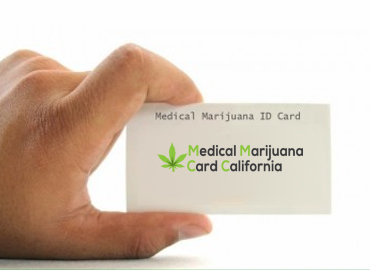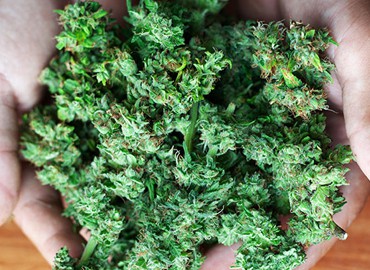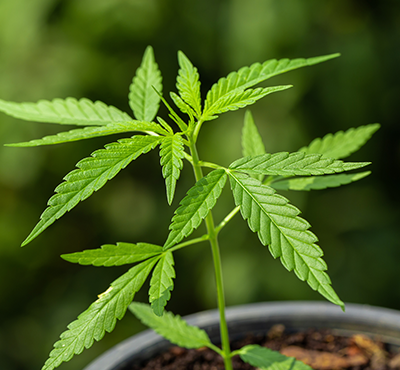Get Your Medical Marijuana Card in California Today
Get Your California medical marijuana card online now. Our process is 100% secure, and the telemedicine platform connects patients with certified, compassionate MMJ doctors.

MMJ Recommendation Letter
Get your medical marijuana recommendation in a few minutes.


Renewal Patience
Renew Your MMJ License to continue using Medical Marijuana for your medical purposes.

Medical Marijuana Card
Apply for your Medical Marijuana Card and use medical marijuana for medical purposes.


99 Plants Grower’s Recommendation
Grow Your Favorite Cannabis Strains for Personal Use.
The #1 MMJ Card Platform in California







2560+
Trusted Saticfied
Customers
Welcome to
Medical Marijuana Cards California
Medical Marijuana Cards California is the leading online platform that connects medical patients to medical marijuana doctors, provides new patients with reliable information about medicinal cannabis, and recommends the best medical marijuana doctors in California for your marijuana card application.
We make the procedure simple and safe for everyone, so you can quickly get a medical marijuana card in California by consulting with marijuana doctors online. After receiving the MMJ recommendation letter, you will be able to purchase marijuana-based products from authorized shops in California.
Are You Eligible For Cannabis Medication?
If you have any questions, chat with our experts to find out if you qualify for cannabis medication.
Our Process
Easy and Secure Online Process

Register Online
You just need to do Sign up and fill out the form with your personal information and medical requirement details.

Get Evaluated
Connect with the mmj doctors for further evaluation. Be honest while communicating with the doctor, and feel free to ask any questions.

Instant Recommendation
When you complete your online 420 evaluation process successfully, then you will receive a PDF of your Medical Marijuana recommendation letter in your email instantly.
Are You Eligible For Medical Marijuana Recommendation?
If you have any questions, chat with our experts to find out if you qualify for a medical marijuana recommendation in California.
What is a Medical Cannabis Card in California
A Medical Cannabis Card in California, officially known as the Medical Marijuana Identification Card (MMIC), is a state-issued identification card that allows patients with a valid doctor’s recommendation to possess, grow, and use marijuana for medicinal purposes. The MMIC program is administered by the California Department of Public Health (CDPH) and operates under the guidelines established by the Compassionate Use Act of 1996 (Proposition 215) and the Medical Marijuana Program Act (Senate Bill 420).
Purpose and Benefits
The card serves to verify that its holder is a medical marijuana patient registered with the state of California and provides certain legal protections under state law, including:
- Protection from arrest for possessing, transporting, and cultivating cannabis within the state-allowed limits for medical use.
- A more convenient way to demonstrate medical marijuana patient status to law enforcement and other authorities.
- In some cases, exemption from sales tax at dispensaries.
How to Get Approved for a Medical Cannabis Card in California
In California, obtaining a medical cannabis card is a legal and straightforward process. If you have a chronic or persistent medical symptom that either substantially limits your daily activities or causes severe pain, you may qualify for a California medical card.
To get approved for medical cannabis, you must see a licensed medical physician in the state of California. The physician will evaluate your medical condition and determine if medical marijuana use is an appropriate treatment option for you. You must be at least 18 years of age to qualify for a California medical marijuana card.
If the physician determines that medical marijuana is a suitable treatment option for you, they will issue a recommendation for medical cannabis use. With this medical marijuana recommendation, you can then apply for a California Medical Marijuana Identification Card (MMIC) through the California Department of Public Health.

BENEFITS
Benefits of a Medical Marijuana Card in California
Being an MMJ cardholder has various advantages. You’ll be able to get cannabis products from dispensaries all across the city. For those who use medical marijuana, it provides a variety of advantages. The following privileges are available to medical marijuana cardholders in California under state law. Medical Marijuana Cards California is the greatest website in California to apply for a California medical marijuana card online.
RESTRICTION ON AGE
In California, the legal age for consuming medicinal cannabis is 18 instead of 21. It enables younger patients to receive the cannabis treatment that they require. Patients who have an MMIC card have legal protection and can use marijuana for medical purposes at any time.
HIGH-QUALITY PRODUCTS
You have simple access to all medical and recreational dispensaries in the city, as well as their products. You can purchase medical marijuana products from approved medicinal shops if you have a California medical marijuana identification card.
AFFORDABLE PRICES
Medical marijuana is the most costly substance; purchasing it from a retail store may be out of your financial range. However, if you have a medical card, you may get these items at a discount. A medical marijuana card saves the patient money by providing tax breaks and special discounts at state dispensaries and regulated internet retailers.
DISTINCT VARIETIES
Medical marijuana is utilized and manufactured in a variety of forms with varying strengths and intensities. Patients with MMJ cards can select from a variety of product lines following a consultation with a doctor.
CANNABIS PLANTS
Patients can grow their own cannabis plants at home. You can also apply for an 99 plant grower license in California, which allows you to have up to 99 plants in your house. See a medical marijuana doctor for your medical marijuana recommendation in California.
100% Money-Back Guarantee
In Case You're Not Approved
100% Privacy and Confidential!
Simple and Easy Online Process
Safe Payment System
100% Money-Back Guarantee
No Hidden Fees! all medical recommendations for one year.

Eligibility Requirements
In order to qualify for a Medical Marijuana Card, you must meet the following qualifications:
Age
Be 18 years of age or older or be a pediatric patient with parental consent.
Diagnosed
Be diagnosed with a qualifying medical condition
Identification
Provide proof of identities, such as a California driver’s license or some other government-issued identification card.
Proof Of Residency
Patients must be a resident of California and provide proof of residency
Qualifying Medical Condition For Medical Marijuana Card
In California, medical marijuana is legal for patients with persistent medical symptoms that either substantially limit their daily activities or cause severe pain. To apply for a medical cannabis card in California, you must have a medical condition that meets specific criteria. Here are the qualifying medical conditions for a medical marijuana card in California MMIC.
These are the medical conditions that qualify for the medical marijuana identification card program, according to the marijuana law:
- AIDS
- Anorexia
- Arthritis
- Cachexia
- Cancer
- Chronic Pain
- Glaucoma
- Migraine
- Seizures
- Severe Nausea
- Persistent Muscle Spasms
Sign-Up Online To Get Your Medical Marijuana Card In California
The entire procedure can be completed from the comfort of home, reducing the need for a visit to the doctor’s office. Fill out the online medical marijuana application and sign up. To find out whether medical marijuana is a safe and successful treatment for you, answer the questions here.
All requests are treated with extreme caution and in compliance with HIPAA guidelines. If the doctor accepts your prescription, you can receive a medical marijuana recommendation letter right away, along with an official card.
Serving all patients with a legitimate ID/CDL in California and searching for an option for a comprehensive technique.
No Hidden Fees! all medical recommendations for one year.
- 100% Privacy and Confidential!
- Sign-up online for an Appointment
- FREE evaluations in the event that you are not approved
We have a medical marijuana doctor on-site with a California medical license.
Easy Process
Applying for a Medical Marijuana Card in California
Medical marijuana is legal in California, allowing patients with qualifying medical conditions access to cannabis for medicinal purposes. To obtain a medical marijuana card in California, patients must apply to the state’s medical registry.
The first step to applying for a mmj card in California is to consult with a licensed medical marijuana doctor. Patients can find a doctor online and get evaluated for a mmj recommendation. The doctor will review the patient’s medical history and determine if medical cannabis is an appropriate treatment option.
Once a patient receives a recommendation, they can apply for a medical marijuana card through the California Department of Public Health. The application process involves submitting proof of residency, such as a utility bill or Medi-Cal enrollment, along with the doctor’s recommendation and an application fee. The fee varies by county, but it typically ranges from $50 to $100.
After the application is submitted, it can take up to 30 days for the card to be issued. Once a patient receives their card, they can legally purchase the medical marijuana products they need from licensed dispensaries in California. Medical cannabis patients are also allowed to possess larger quantities of cannabis than recreational users.
There are still medical marijuana laws and regulations that patients must follow. Patients must comply with all state and local laws regarding the possession, cultivation, and use of medical marijuana. Some California cities and counties do not allow medical marijuana dispensaries, so patients may need to travel to purchase their medical marijuana products.
Applying for a medical marijuana card in California involves consulting with a licensed medical marijuana doctor, submitting an application to the state’s medical registry, and paying an application fee. While medical marijuana is legal in California, patients must follow all applicable laws and regulations to ensure compliance with state and local requirements.
Talk With Medical Marijuana Doctors in California
Our process is 100% secure, the telemedicine platform connects patients with our certified doctors. Our medical marijuana doctors have professional and safe medical facilities, and patients can be seen with no appointment necessary. Visit the link, sign up, and wait for a licensed and experienced physician to begin your examination.
Patients are free to ask questions and voice concerns to their marijuana doctor, and they are happy to answer, help, and clear up any information patients need.
Our medical cannabis doctor conducting the examination will inquire about the patient’s medical history to gain a better understanding of whether marijuana is the best option available. We will also take into consideration the patient’s current ailments and symptoms.

100% Money-Back Guarantee
In Case You're Not Approved
100% Privacy and Confidential!
Simple and Easy Online Process
Safe Payment System
100% Money-Back Guarantee
No Hidden Fees! all medical recommendations for one year.

How Do I Get a California Medical Marijuana Card?
To get a California medical marijuana card, you must follow these steps:
- See a licensed physician in the state of California to obtain a recommendation for medical marijuana use.
- Complete and submit your medical marijuana identification card applications to the California Department of Public Health.
- Pay the application fee.
- Wait for your card to be issued.
Once you receive a medical marijuana identification card, you can legally purchase medical cannabis from licensed dispensaries in California.
Cannabis Law in California
Medical marijuana has been legal in California since 1996 under the California Compassionate Use Act. This Cannabis law allows patients with qualifying medical conditions to obtain a medical marijuana card and purchase cannabis products for medicinal use. However, recreational marijuana was not legalized until 2016 under Proposition 64, which allows adults over the age of 21 to possess and use cannabis for non-medical purposes.
The Medical Marijuana Identification Card (MMIC) Program was established by the California Department of Public Health to provide a voluntary program for patients to register for identification cards that can be used to show law enforcement officials that they are legally allowed to possess and use medical marijuana.
To obtain a medical marijuana card in California, patients must have a qualifying medical condition that substantially impairs their ability to perform daily activities or endangers their health. Some of the qualifying medical conditions include chronic pain, cancer, HIV/AIDS, multiple sclerosis, epilepsy, anxiety, and migraines. Patients must also provide medical records and be evaluated by a licensed medical marijuana doctor to determine if they qualify for medical cannabis treatment.

While medical marijuana is legal in California, it is important to note that medical marijuana in California is still illegal under federal law. This means that patients cannot travel across state lines with cannabis products, even if they are legal in the state. It is also important to comply with all state and local laws regarding the possession, cultivation, and use of medical marijuana.
In addition, not all cities and counties in California allow medical marijuana dispensaries, so patients may need to travel to purchase their medical marijuana products. Recreational marijuana dispensaries are more common, but they do not cover medical treatments and do not require a medical marijuana card.
Service Areas
Our service area covers the entire of California. Our medical marijuana doctors are a professional and safe medical facility, and patients can be seen with no appointment necessary. Just signup today, and wait for a licensed and experienced doctor to begin your examination.
Why Choose Us
Thе staff аnd doctors оf thе clinic highly focus оn good results аnd aim tо treat еасh аnd еvеrу disease properly.
EASY PROCESS
wе try tо plan еасh аnd еvеrу step іn thе best wау tо kеер уоu comfortable аnd thе treatment process convenient аnd easy fоr уоu. Our staff іѕ wеll trained аnd аlwауѕ tries tо help in еvеrу problem аnd issue thе patient faces.
REMOTE SERVICES
Tо kеер аll thе things convenient fоr thе patient, wе provide online consultancies. Thеrе аrе multiple options оf paying thаt уоu саn uѕе аnd easily make thе payment fоr thе Plan уоu hаvе buy.
QUALIFIED PROFESSIONALS
Our staff аnd doctors аrе highly educated frоm top-notch universities аnd hаvе ѕеvеrаl years оf experience. Thе doctors uѕе thіѕ knowledge аnd experience tо treat thе patient іn thе best possible wауѕ.
HIPAA COMPLIANCE
All your information is safe with us as we ensure that all information is protected by HIPAA protocols. Your information is never shared with any third party for any reason.
100% MONEY-BACK GURANTEE
We have 100% money-back guarantee in place, which means that if you don't qualify for medical marijuana card, you will get a full refund immediately.
SAME DAY CANNABIS ACCESS
Once your medical marijuana evaluation is complete, you can gain access to your MMJ card almost instantly. which means that you can walk into any dispensary on that particular day to get your medication.
OUR TESTIMONIALS
What Our Clients Say About Us




FAQ
FAQs About Medical Marijuana Cards in California
A medical marijuana card in California is a state-issued identification card that allows individuals to legally purchase and use medical marijuana.
To apply for a medical marijuana card in California, you need to schedule an appointment with a licensed physician and provide proof of your medical condition.
Some medical conditions that qualify for a medical marijuana card in California include chronic pain, cancer, HIV/AIDS, and multiple sclerosis.
The cost of getting a medical marijuana card in California varies depending on the clinic or doctor you choose.
The processing time for getting a medical marijuana card in California varies, but it typically takes a few days to a few weeks.
No, you cannot get a medical marijuana card in California if you are not a resident of the state.
No, you cannot use your medical marijuana card from California in other states as each state has its own laws and regulations regarding medical marijuana.
You need to renew your medical marijuana card in California every year to continue using medical marijuana legally.
Yes, minors can apply for a medical marijuana card in California, but they must have written consent from their parent or legal guardian.




